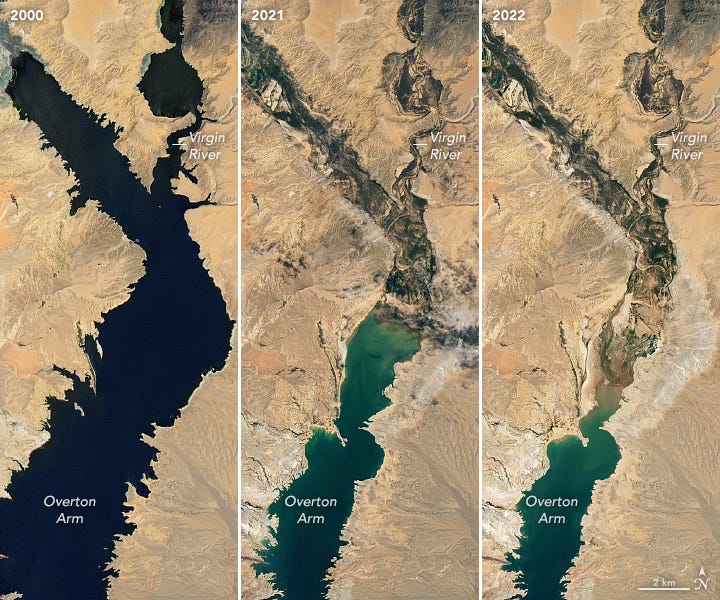- A third set of human remains was discovered at Nevada's Lake Mead on July 25.
- In May, witnesses discovered two other bodies in the drying lake.
- The discoveries come as water levels drop due to a climate change-induced drought, experts say.
A third set of human remains were found in Nevada's Lake Mead on July 25 as water levels have receded to historic lows during a drought fueled by climate change.
The remains were spotted by a witness at Swim Beach on Lake Mead during the afternoon of July 25, the National Park Service announced. Investigators retrieved the remains, the park service said.
In May, boaters at the lake discovered the decades-old remains of a person who appeared to be shot in the head and put into a barrel in the lake. Less than a week later, two sisters paddleboarding on the lake discovered another set of skeletal remains.
Experts say these newly found remains are likely just the beginning.
"I would expect human remains of missing persons will probably be revealed over time, as the water level continues to recede," Jennifer Byrnes, a forensic anthropologist that consults with the Clark County coroner's office, told Insider in May.
Eric Bartelink, a forensic anthropologist at California State University's Chico Human Identification Lab, told Insider the dropping water levels have uncovered cases that have been hiding beneath the surface for years.
"For us, it's really just potentially more opportunities to find missing persons and more likelihood that certain cases are going to be discovered," he said, adding, "It's just going to reveal more things that were in water that you normally wouldn't have access to very easily."
Recent satellite imagery from NASA illustrated the dramatic drop in water levels at the lake.

"The largest reservoir in the United States supplies water to millions of people across seven states, tribal lands, and northern Mexico," the space agency said in a news release earlier this month."It now also provides a stark illustration of climate change and a long-term drought that may be the worst in the US West in 12 centuries."










